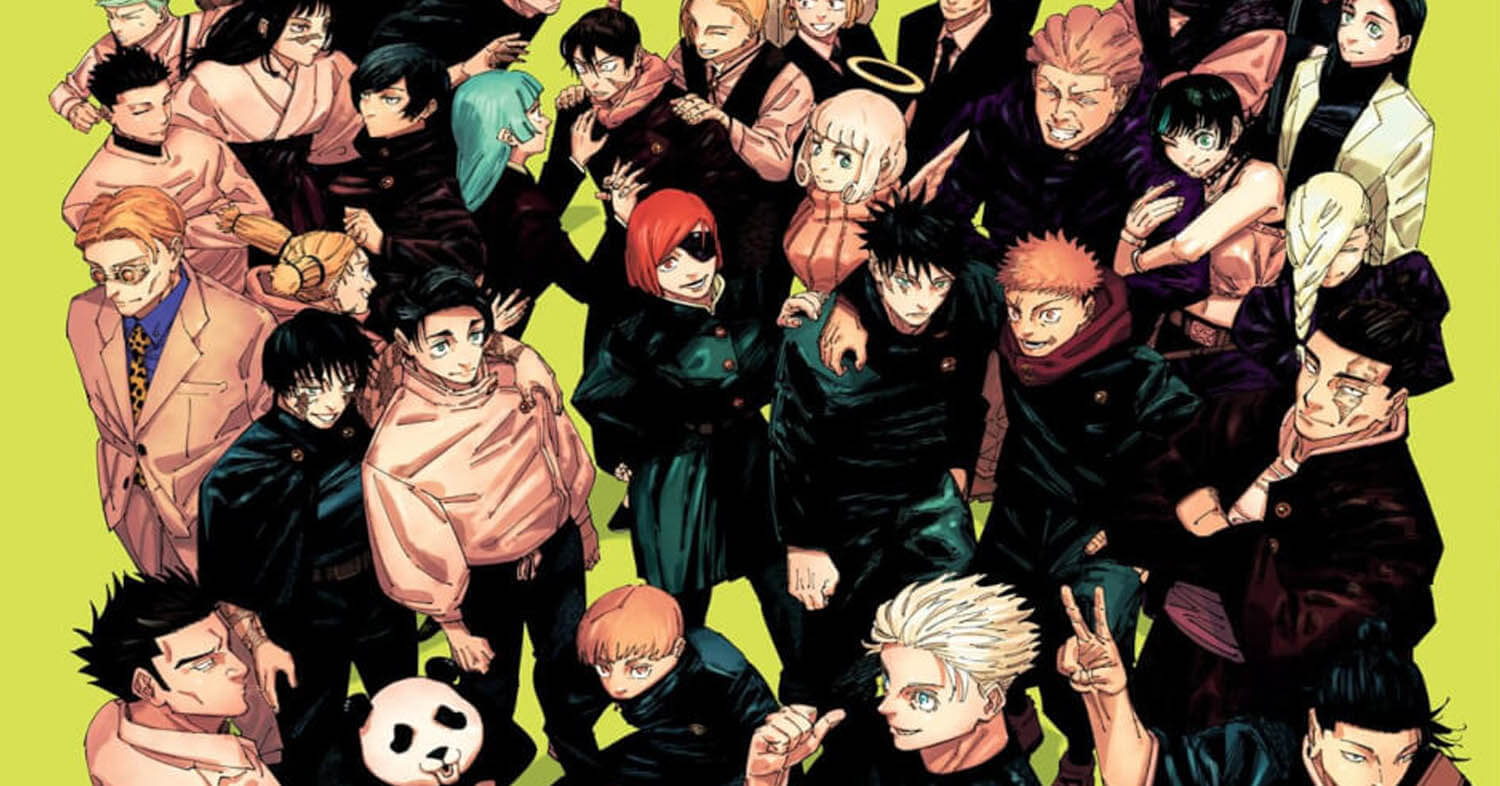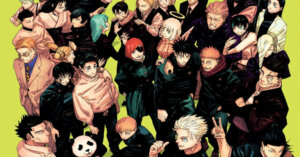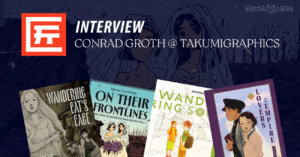This articles contains spoilers for the Jujutsu Kaisen manga.
The last chapter of Gege Akutami’s Jujutsu Kaisen manga released on September 29th, 2024 and I’m now convinced that we’re living in the endgame of “shonen” as a genre. The popularity of the series and its impact on popular culture goes without saying; after all, the manga regularly tops sales charts and the anime adaptation swept this year’s Crunchyroll Anime Awards. Jujutsu Kaisen is clearly a landmark achievement in manga with characters, artistic sensibilities, and themes that resonate with millions of people across the world.
However, the medium, influences, and execution of Jujutsu Kaisen paint a more interesting, and potentially concerning, picture than anything within the manga’s actual pages. This series is more overtly inspired by its predecessors within the shonen genre, yet feels like it does less to advance the medium than any of the works it draws from. The end result leaves the series feeling like a collection of underexplored ideas stuffed into a mold that can’t do them justice, and the broader shonen genre feeling more like a collection of tropes and narrative formulas than an artistic discipline.
Jujutsu Kaisen’s Overt Shonen Inspirations
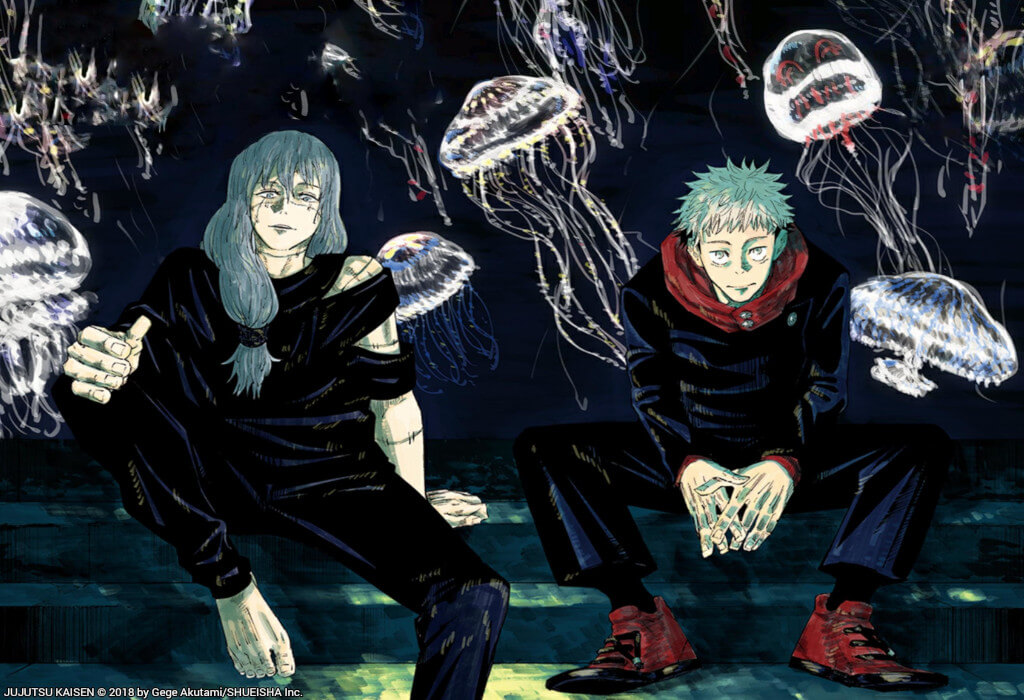
You don’t have to read much of Jujutsu Kaisen to realize that it’s deeply informed by preceding shonen juggernauts. The supernatural focus and darker atmosphere was both popularized and perfected in the genre by Yoshihiro Togashi’s Yu Yu Hakusho. Character dynamics — including a main cast consisting of a two-boys-one-girl trio with a semi-masked adult instructor — are very similar to Masashi Kishimoto’s Naruto. This world of rarely explained, but convoluted, and excessively organized cursed techniques and power scaling is reminiscent of Yoshihiro Togashi’s Hunter X Hunter. Also, it practically goes without saying that the character’s attendance of a special school for special kids is evocative of the set-up in Kohei Horikoshi’s My Hero Academia; though JJK drops the school backdrop almost entirely by the manga’s halfway point.
I don’t bring up all of these comparisons to be pedantic or reduce Jujutsu Kaisen to a collection of popular ideas in the medium, but it’s clear that the end result of JJK is weaker than its overtly inspired parts. Though emulating these previous works is a big part of JJK’s popularity, the adherence to the shonen mold created by these works is what keeps it from growing beyond its predecessors or even being the best version of itself. To quote Marshall McLuhan, “the medium is the message,” and it becomes increasingly obvious as JJK goes on that the medium of a shonen battle manga is incongruent with the messages it’s trying to impart on its readers.
The first arc of Jujutsu Kaisen, dubbed the Vs. Mahito Arc, is a pretty straightforward exploration of bullying in Japanese school systems. Between the protagonists of shonen series often being children to young adults, the targeted readership of shonen being people young enough to be in school, and bullying being a primarily social issue, this storyline fits well into the shonen template. Moreover, this arc has just enough twists on the shonen formula to feel novel. Namely, Yuji’s new friend and bullying victim Junpei dying before its climax and Yuji having to accept the darker realities of the world rather than solve them with his shonen protag pluckiness.
There are a lot of good ideas early on in Jujutsu Kaisen; such as fan favorite character Nanami who burns out in his pursuit of wealth and instead rededicates himself to doing public good as a jujutsu sorcerer. This character literalizes the core themes of the series in making society better out of an obligation to do right by the people we share a society with. A lot of the writing around Nanami is fantastic and that’s a big part of why he’s resonated with audiences so much…but then he dies without much thematic resolution because mentor figures have to have a passing the torch moment in shonen manga and Jujutsu Kaisen doesn’t know how to progress any of its ideas outside of the shonen constraints it grows to struggle against.
Jujutsu Kaisen’s Growing Pains
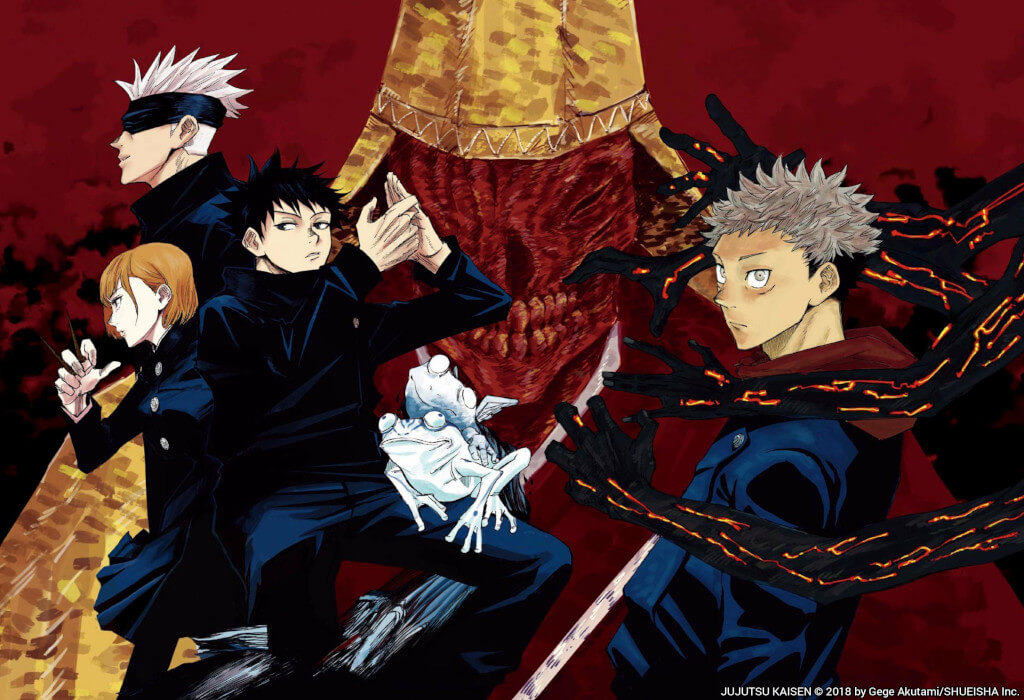
Once the first major arc ends and it becomes clear that the series has legs, Jujutsu Kasien becomes more overtly about broader social issues, with a couple of the author’s personal hot button issues thrown in for good measure. Some of these topics include: how America uses its military to exploit the resources of other nations, the challenges facing Japanese comedians, and the failings of the Japanese legal system. But the series wraps up with the main trio of characters (who represent future generations) collectively defeating Ryomen Sukuna, an incarnation of ill will generated by previous generations attempting to hold onto power through any means necessary.
You don’t have to be the most socially or politically literate person to realize that all the real world issues that Jujutsu Kaisen tackles are multifaceted, and would need more than a few chapters of a manga to be properly explored. Or even that most of them aren’t very well suited for exploration in a shonen battle manga, where nearly every conflict needs to be resolved with a cool fight. This is where the cracks really start to show in JJK and what makes it such a difficult manga to think about critically. It’s beholden to shonen genre tropes and its narrative suffers as a result.
The Japanese legal system, with its 99% conviction rate, has a litany of problems relating to forced confessions, crimes involving serious charges being settled out of court, and lighter sentencing for major crimes. However, the few chapters dedicated to these issues and a cool lawyer character, Hiromi Higuruma, don’t allow for the nuance that these subject matters deserve. If anything, JJK’s touching on these issues just makes me wish I was reading a manga more overtly about the struggles of working as a comedian in Japan or the impact America’s military has on non-Americans.
Even the manga’s final bout against Sukuna feels forced and narratively unfulfilling. The manga spent most of its run building up the nearly all-powerful Satoru Gojo as being an avatar of change who could free this supernatural world from its oppressive, older leaders. But instead of doing the epitome of that by defeating Sukuna, he dies because god forbid the final boss in a shonen manga lose to anything other than the main characters’ power of friendship.
As a point of comparison, Tatsuki Fujimoto’s Fire Punch actually does a great job exploring big social issues around ideas like the faults of religion and bigoted social norms. Fire Punch even features several queer characters and explores how they’ve become disenfranchised and even resentful of broader society after being ostracized by social institutions for their entire lives. Fire Punch is able to tackle this subject matter better than Jujutsu Kaisen because it’s drawing from sources of inspiration other than manga, namely cinema, and isn’t principally trying to emulate what made past shonen manga popular.
Jujutsu Kaisen learned a lot from the shonen manga that came before it but, as it prioritizes emulating those works instead of iterating on them, I very much doubt JJK will have the same lasting impact as works like Dragon Ball, Fist of the North Star, and One Piece. This begs the question,
Where Do We Go From Here?
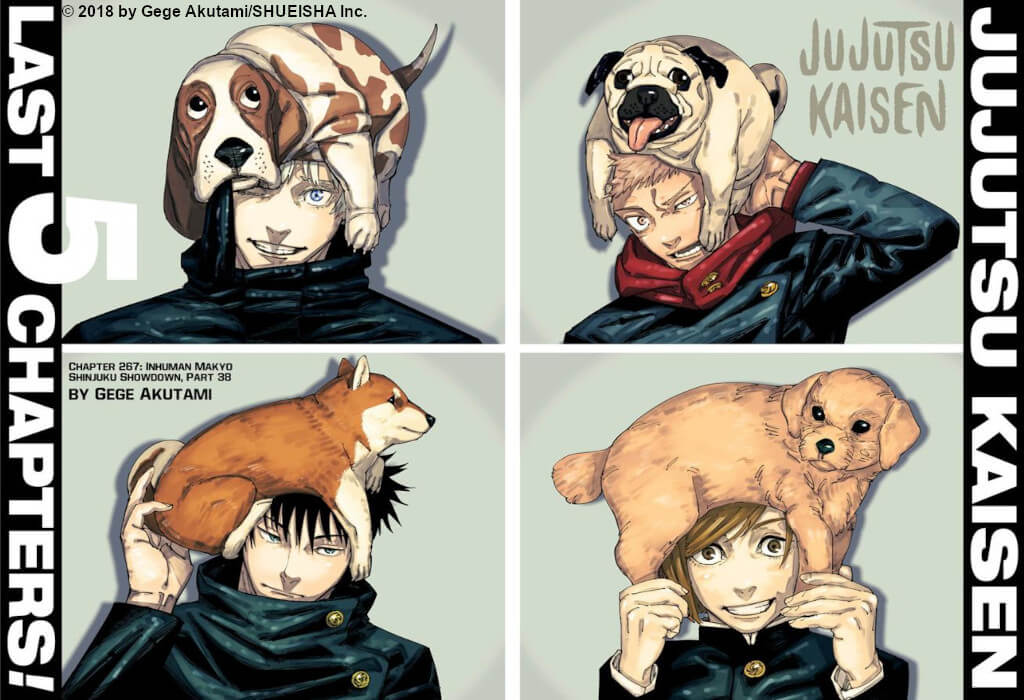
To be absolutely clear, Jujutsu Kaisen was a good manga and there are a lot of things to like in it. For instance, the character Mahito being the manifestation of mankind’s innate fear of other people and his power allowing him to transform himself and humans into monstrous creatures is nothing short of inspired. When JJK is setting up its story and world, it’s phenomenal and it seems like it might be learning from the mistakes of its predecessors. Another great example of this is Gojo actually having an impact on the world and narrative as the strongest person in it, rather than just existing in the background or not changing how different groups approach combat. Looking at you, Gildarts Clive from Fairy Tail and pretty much anyone in One Piece whose power level makes them a one man army.
That being said, the back half of Jujutsu Kaisen is frustrating and underwhelming because, instead of building on its influences and evolving past them, it falls back on familiar tropes with some wacky bullshit thrown in to make them seem novel. While writing this, I realized that two different characters, Todo and Choso, magically become friends with Yuji without any kind of overt explanation. Both of them just decide, “This guy is my brother,” and it’s implied that this happens because of Yuji’s (at the time unexplained) magical power. Confusingly, in the end he has a couple of different powers instead and these two characters invented memories and longstanding relationships with Yuji without any in-world explanation.
I’m convinced these plot points only happen in Jujutsu Kaisen because “enemy to ally” story beats are staples of the genre. I’m not totally sure where “shonen” as a genre is supposed to go now that its last major series ended without really pushing the genre forward. My Hero Academia added some Young Adult fiction and western comics influences to the shonen pantheon. Demon Slayer ended up espousing traditional family values as the core theme of its run; which I don’t care for but I at least think that’s a novel contribution to this space. JJK, though, ends without contributing anything for future works to build upon.
That makes me hopeful that the next round of near-ubiquitous manga will get weird with their stories and inspirations, and that we as a community will stop hyper fixating on genre conventions so much. There’s already a good amount of entries in this emerging trend too. Sakamoto Days has quietly thrived in Shonen Jump for years now, features a main cast of entirely adult characters, and draws more from action movies than other shonen manga. The meme that just won’t quit Kagurabachi forgoes the kind of power scaling and wiki-able world building that’s increasingly common in shonen manga and instead is a non-stop blitz of cool characters and fights. Both Ruri Dragon and Blue Box grace the pages of the illustrious Shonen Jump, but are closer to slice-of-life and romance stories respectively. Then there’s the recently animated DAN DA DAN manga, which is on track to be one of the most notable anime and manga of this decade specifically because it ignores genre conventions and tells a story that’s both original and compelling.
In short, manga’s about to get WEIRD and I could not be more excited for a new batch of discourse-dominating titles to take over. Marketing terms disguised as media genres have made both the manga industry and fan community far too rigid in their production and analysis. With Jujutsu Kaisen feeling like the culmination of the traditional shonen genre, I cannot wait to see what this space does next and how it reinvents itself.

Featured Sponsor - JAST
The sweetest romance and the darkest corruption, the biggest titles and the indie darlings; for visual novels and eroge, there's nowhere better.
Big thank you to our supporters
From their continous support, we are able to pay our team for their time and hard work on the site.
We have a Thank-You page dedicated to those who help us continue the work that we’ve been doing.
See our thank you page